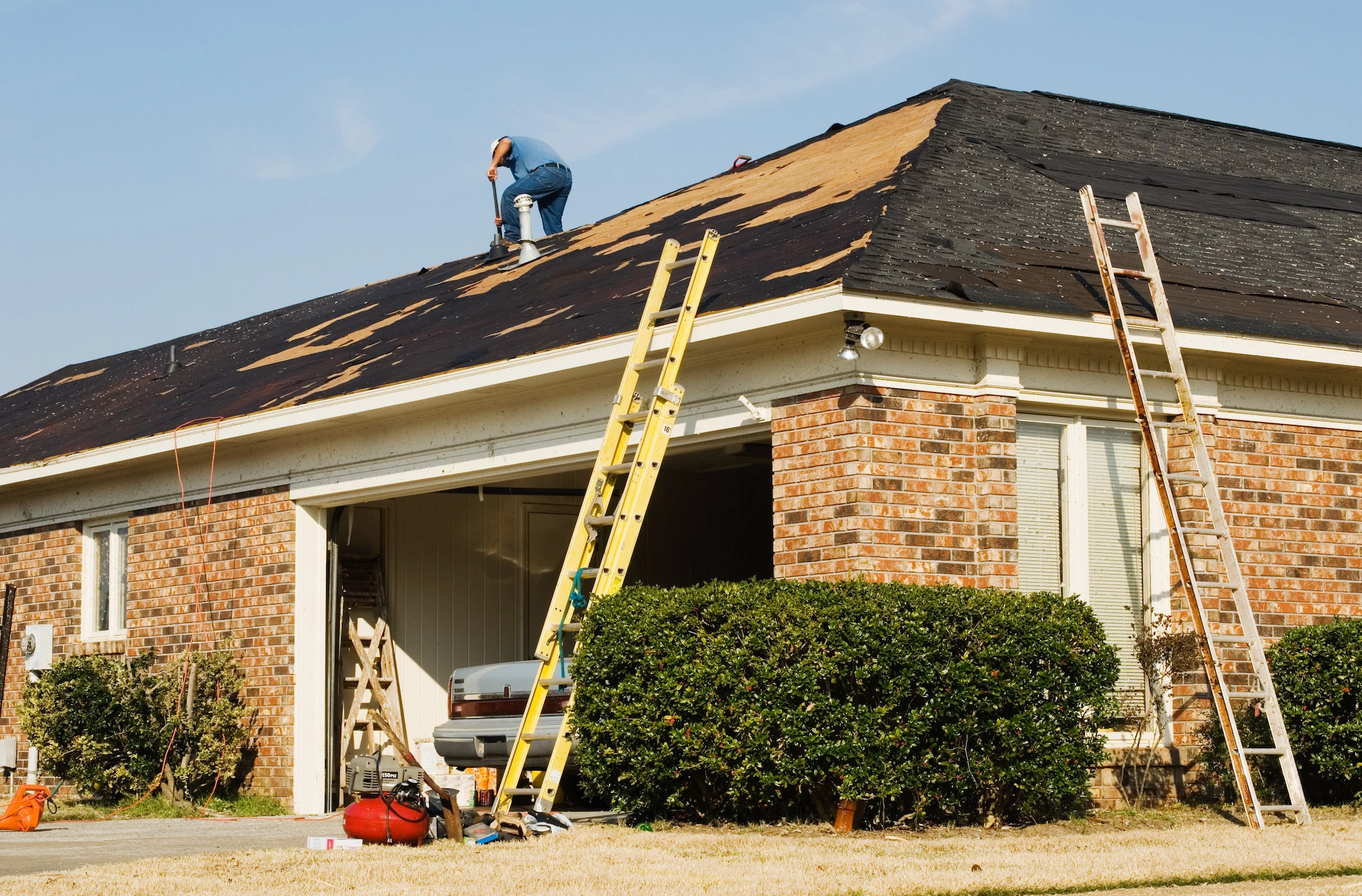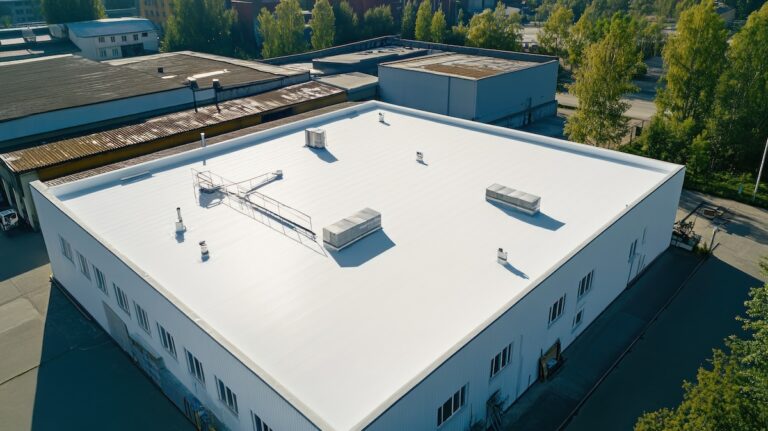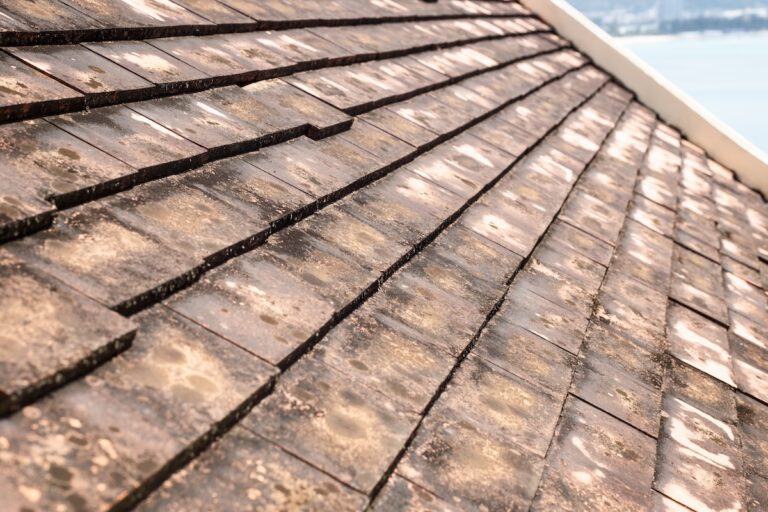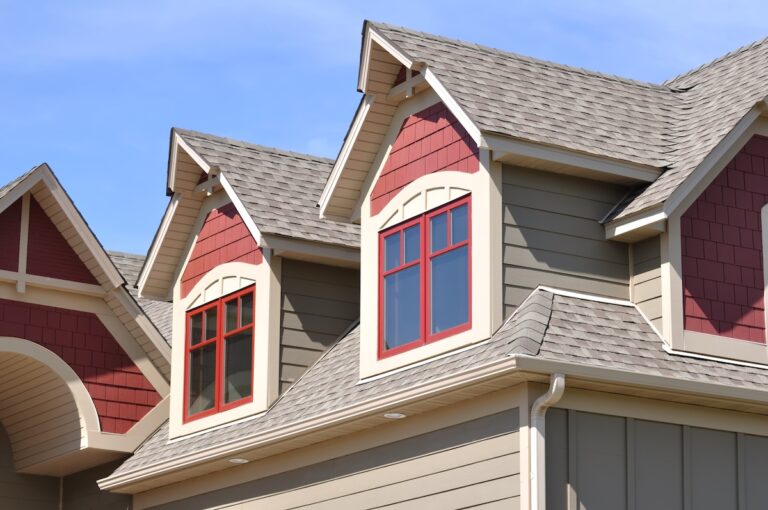Your roof is more than just the cap on your home; it’s a crucial system that protects your property, enhances its curb appeal, and contributes to its overall value. Understanding your roof system is essential for homeowners, as it empowers you to make informed decisions about its care and maintenance.
Welcome to Roofing 101, where we break down all the important information you need to know, including:
- Components of a roof
- Roofing materials
- Roof maintenance
- Signs of damage
- What your insurance covers
- Finding the right contractor
Why Understanding Your Roof System Matters
Your roof is your home’s first line of defense against the elements. From rain and snow to wind and sunlight, it withstands constant exposure to weather hazards. Understanding its components and how they work together helps you recognize potential issues early on, saving you from costly repairs and ensuring your home remains safe and comfortable.
The Different Parts of a Roof
Did you know that your roof isn’t just a bunch of shingles slapped on top of your house? It is actually fairly complex, with many different parts making up the whole, including:
- Roof Deck: The foundation of your roof, typically made of plywood or oriented strand board (OSB), providing structural support.
- Underlayment: A water-resistant or waterproof layer installed beneath the roofing material, protecting the deck from moisture infiltration.
- Roofing Material: The outermost layer of the roof, chosen based on climate, aesthetic preferences, and budget. Common materials include asphalt shingles, metal, tile, slate, and wood shakes.
- Flashing: Metal strips or sheets installed at roof intersections, valleys, chimneys, and other areas vulnerable to water penetration, preventing leaks.
- Soffit and Fascia: The underside of the roof overhang (soffit) and the vertical band under the roof edge (fascia), providing ventilation and aesthetic appeal.
- Gutters and Downspouts: Channels along the roof edge collecting rainwater and directing it away from the foundation to prevent water damage.
4 Popular Roof Materials
When it comes to your roofing materials, you have lots of options. Here are a few of the most popular ones for homeowners.
1) Asphalt Shingles
Affordable and versatile, asphalt shingles come in a variety of colors and styles, offering decent durability and easy installation.
2) Metal Roofing
Known for its longevity and energy efficiency, metal roofing is available in steel, aluminum, copper, and other materials, offering excellent resistance to fire and extreme weather.
3) Tile and Slate:
These premium options add elegance and durability to homes, with tile roofs common in Mediterranean and Spanish-style architecture, while slate provides a timeless appeal and exceptional longevity.
4) Wood Shakes and Shingles
Despite requiring more maintenance, wood roofs offer natural beauty and insulation properties, with cedar being a popular choice.
How to Maintain Your Roof
Regular maintenance is key to extending your roof’s lifespan and preventing costly repairs. Here are some essential maintenance tips:
- Inspect Regularly: Schedule annual inspections to check for loose or damaged shingles, signs of leaks, and debris buildup.
- Clean Gutters: Clear debris from gutters and downspouts to ensure proper drainage and prevent water damage to the roof and foundation.
- Trim Overhanging Branches: Keep trees near your home trimmed to prevent branches from rubbing against the roof and causing damage.
- Address Moss and Mold: Remove moss, algae, and mold promptly to prevent them from damaging the roofing material and compromising its integrity.
- Repair Promptly: Fix minor issues, such as missing or damaged shingles, flashing, or seals, before they escalate into larger problems.
Common Signs of Roof Damage
Being able to recognize signs of roof damage early can prevent minor issues from turning into major headaches. Look out for:
Leaks:
Water stains on ceilings or walls, dampness in the attic, or visible water dripping during rainfall.
Missing or Damaged Shingles:
Curling, cracking, or missing shingles can compromise your roof’s ability to shed water effectively.
Sagging Roof Deck:
A sagging or uneven roofline may indicate structural issues that require immediate attention.
Granule Loss:
Accumulation of granules in gutters or downspouts can signify deterioration of asphalt shingles.
Visible Wear and Tear:
Excessive wear, blistering, or rust on metal roofing, and cracked or broken tiles on tile roofs.
Repairs vs. Replacements
Deciding between repairing or replacing your roof depends on various factors, including the extent of damage, age of the roof, and budget considerations.
Repairs:
Suitable for isolated damage or minor issues like a few missing shingles or localized leaks. However, repeated repairs may become less cost-effective in the long run.
Replacements:
Necessary for extensive damage, old age, or when the roof’s integrity is compromised. While more expensive upfront, a new roof offers peace of mind and long-term protection.
What Insurance Covers
Homeowners insurance typically covers roof damage caused by sudden events or perils listed in your policy, such as:
- Storm Damage: Including wind, hail, and lightning strikes.
- Fire: Damage caused by fires, whether from natural disasters or accidents.
- Falling Objects: Coverage for damage caused by falling trees, branches, or debris.
- Water Damage: Limited coverage for sudden and accidental water damage, such as burst pipes or ice dams.
However, insurance may not cover damage resulting from neglect, wear and tear, or lack of maintenance. Review your policy carefully to understand your coverage limits and exclusions.
How to Find a Qualified Roofing Contractor
When it’s time for roof repairs or replacements, finding a reputable contractor is crucial. Here’s how to ensure you hire the right professional for the job:
- Research: Seek recommendations from friends, family, or neighbors, and research local roofing companies online. Look for reviews, ratings, and accreditations from organizations like the Better Business Bureau (BBB).
- Check Credentials: Verify that the contractor is licensed, insured, and bonded to perform roofing work in your area. Ask for proof of insurance and any applicable certifications.
- Get Multiple Quotes: Obtain written estimates from several contractors, detailing the scope of work, materials, and labor costs. Compare quotes and consider the value offered, not just the price.
- Ask Questions: Don’t hesitate to ask the contractor about their experience, warranties offered, and the materials they recommend. A reliable contractor will be transparent and happy to address your concerns.
- Review Contracts Carefully: Before signing any agreement, carefully review the contract terms, including payment schedules, project timelines, and warranties. Seek clarification on any ambiguous or unclear provisions.
Roof Replacement or Repair? We’ve Got You Covered
By understanding your roof system, staying proactive with maintenance, and working with qualified professionals, you can ensure your roof provides reliable protection and enhances the beauty and value of your home for years to come. Remember, investing in your roof today can save you from costly headaches tomorrow.
Ready to get started? Contact G Cannon Roofing today to work with the best in the roofing industry!






